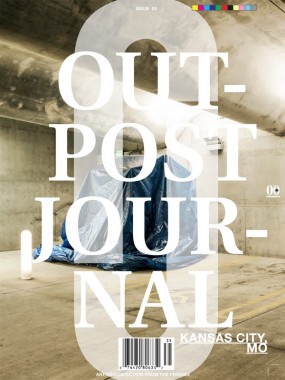
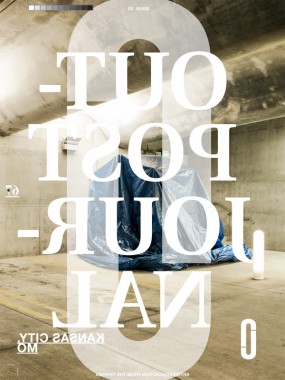
Outpost Journal 3, Kansas City
Softcover, 64 pp. + insert, offset 4/4, 9 x 12 inches
Edition of 500
ISBN 978-0-9836082-2-6
Published by Outpost Journal
$15.00 ·
Outpost is an annual print publication on art, design and community action from cities that have been traditionally underexposed beyond their local contexts. Each beautifully produced and visually engaging issue of Outpost focuses on a single urban location and comes packaged with a limited edition print by an artist from the featured city. Outpost is a journey into the creative heart of a place, and via features like “Secretly Famous” (profiles of the most infamous artsy locals), guerrilla engagements with tourist attractions, historical explorations, mapping projects, and deep dives into artist collectives and organizations, Outpost exposes the myriad ways in which unique local communities arise through creative collaboration and production.
Exploratory and playful, critical with a sense of levity, and inspired by hand-drawn maps, flags, totem poles, poorly pixelated iPhone photos, moody landscapes, and the spirit of adventure, Outpost is dedicated to strengthening ties between communities and spreading new ideas about how creative culture can change our world.
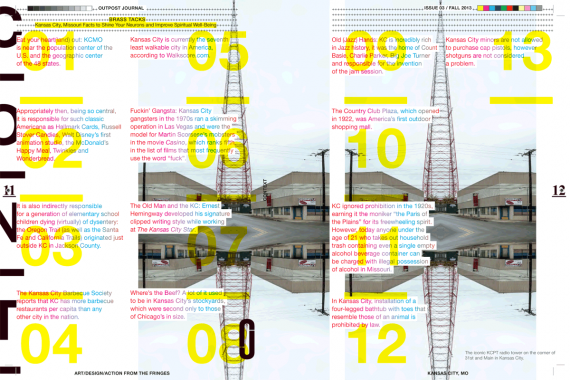
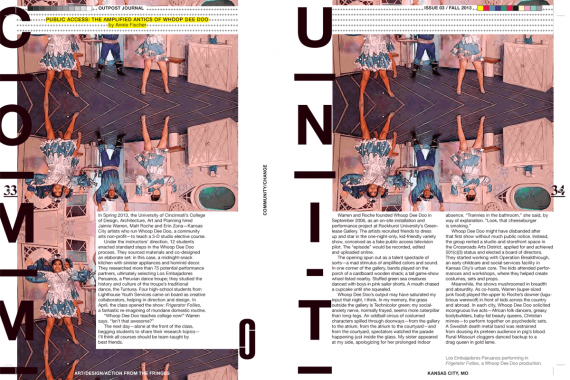
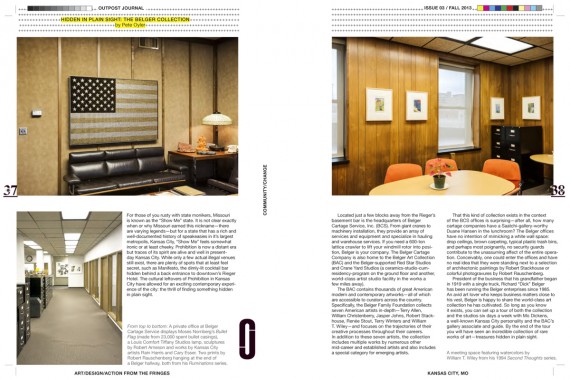
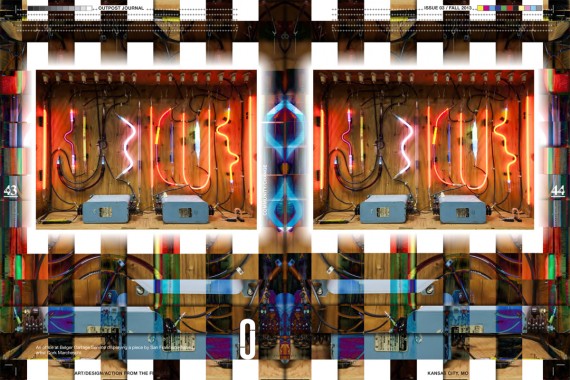
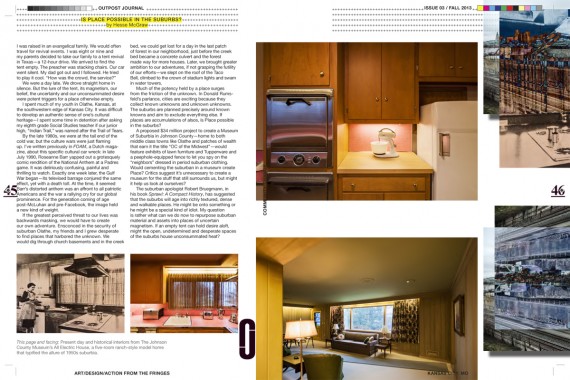
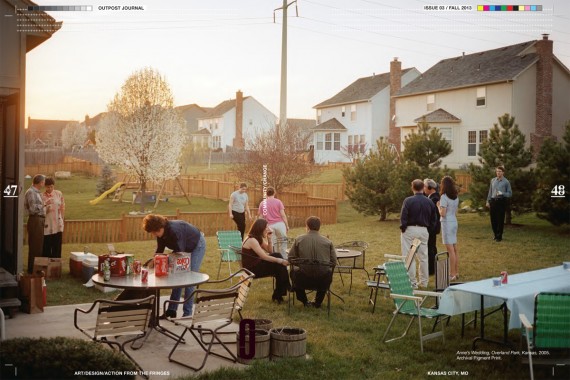
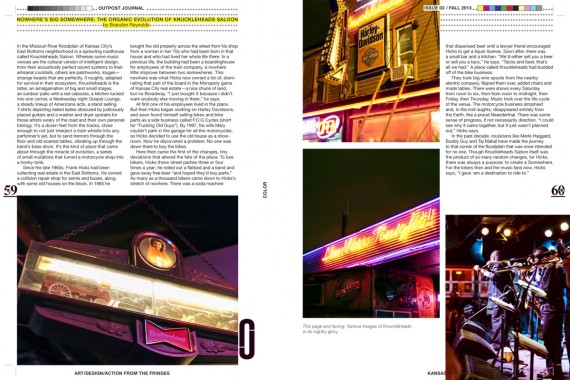
Ahram Park, Aja Blanc, Alex Kwartler, Annie Fischer, Anusha Venkataraman, Archie Scott Gobber, Architecture, Art, Brandon R. Reynolds, Clay Rockefeller, Culture, Dan Maginn, Distribution, Hesse McGraw, Jay Peter Salvas, Kate Hackman, Luke T. Baker, Manya Rubinstein, Matthew Williams, Mike Sinclair, Mike Taylor, Outpost Journal, Pete Oyler, Photography
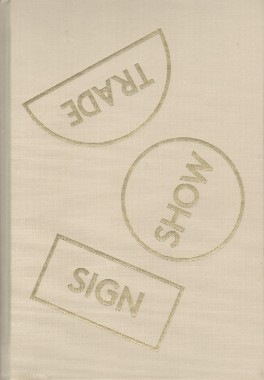
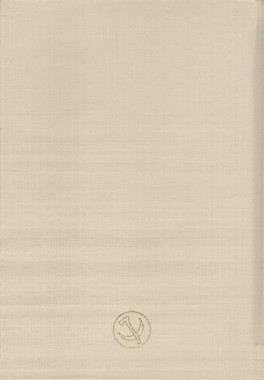
Thomas Macker, SIGN SHOW TRADE
Hardcover, 88 pp., offset 4/4, 180 x 265 mm
Edition of 500
ISBN 978-0-615-76630-0
Published by In The Pines Books
$45.00 ·
Conceptually, the publication is structured horizontally, with two formally similar series of photographic works bridged by photographs and sculptural objects that offer a dialogic counterpoint to the main series. The first group of photographs focuses around seed signs and sacks advertising distinct crop strains of genetically modified corn and soy. The individual sacks and signs are set up at the center of still life compositions, staged in the basement of Macker’s home in Jackson Hole, Wyoming. The sacks hang from the fiberglass insulation and wooden boards of the basement ceiling, while the signs are placed in gravel on the floor. The backdrops, often constructed by hanging used textiles against the gold-painted walls of the basement, offer glimpses of American nostalgia — old quilts featuring Winnie The Pooh, The Transformers, and Disney Princesses, along with faded floral sheets, tie-dye hangings, penguins. The series is presented as a calendar of images; each photograph is named for a month of the year, with an additional one for each season. The repetition in the photographs acts as a meditation on the ways we mark time, while the content of the images posits company branding as a primary signifier of cultural and personal identity: nostalgia and desire for meaning coopted by companies that alter the foundation of our sustenance.
In Macker’s work, the ‘seed’ — as altered commodity — locates the collision between the idea of the natural world as something outside and other than human, and the natural world as what we are (as animals who eat food grown from seeds, eat animals who have eaten plants grown from seeds, breathe air full of oxygen created by photosynthesis, and on and on). This space of collision and contradiction is where Macker argues we reside, and the photographic and sculptural pieces that bridge the two still life series in the exhibition offer a glimpse of the effects of that lived contradiction. Dog God | Man Camp | Big Piney, WY shows a coyote impaled by a pole and posed with its head up (as if howling), a scene Macker found and documented next to one of the “Man Camps” of trailers that have sprung up throughout the Gaslands of Wyoming, the Dakotas, Colorado and Iowa to house temporary gas line workers. Another shows the snow-filled landscape where Matthew Shephard was beaten and killed, the only marker of that moment of cultural mourning and instigator of progressive action now a gas company pole. Bumper stickers Macker stole from trucks in Wyoming and printed onto vintage glass tiles depict bikini-clad women alongside text that reads ‘Just Frack It’, and, a digitally rendered bust of a disembodied pregnant torso hangs next to a digitally rendered image of a Molatov cocktail. Reproduction, destruction, re-birth, identity, and verbal and physical languages of dominance comingle with cultural hope and yearning — a yearning that always seems to leave violence in its wake.
In the second still life series, the seed signs have been replaced by gas company signage. These signs, stolen by Macker during drives across the Gaslands, functioned as markers for the temporary roadways that crisscross the landscape where gas lines are in construction. In this series, the signs rest on top of a wooden crate instead of being placed in gravel, and the backdrop is now constructed of brown carpet. In front of the carpet, Macker has hung reproductions of 19th and 20th century artwork mythologizing woodcutters. Behind a Unit Drilling Company sign directing us towards Rig 24, we see Winslow Homer’s The Woodcutter, here featured on a living room wall as part of an interior design advertisement. In Der Holzfäller, Ferdinand Hodler, 1910, a Danger Benzene Cancer Hazard sign accompanied by a potted plant stands in front of Ferdinand Hodler’s Der Holzfäller. Co-opting these already-reproduced artworks, Macker highlights the historic glorification of human dominance over nature, as well as the problematic placement of the artist within this glorification, as a symbol and actor of these same problematic humanist ideals. The scenes are constructed to be visually satisfying, uncomfortable, humorous, claustrophobic, and unexpectedly personal, reflecting our continued desire to feel communal pride in our accomplishments, as well as the consequences of a system in which the structure for expansion we have created necessitates an unwillingness to recognize the fallibility or responsibility of power.
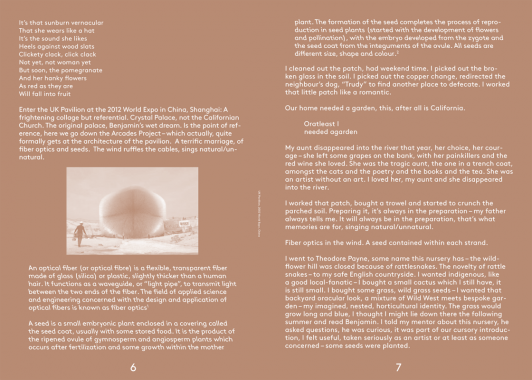
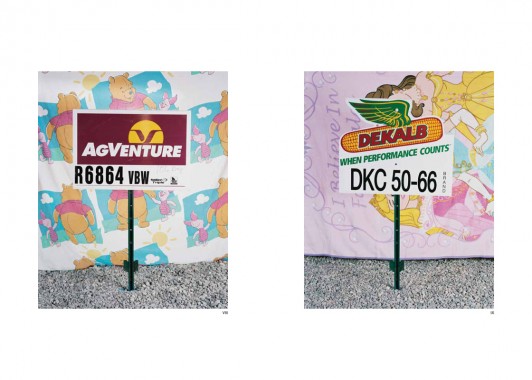
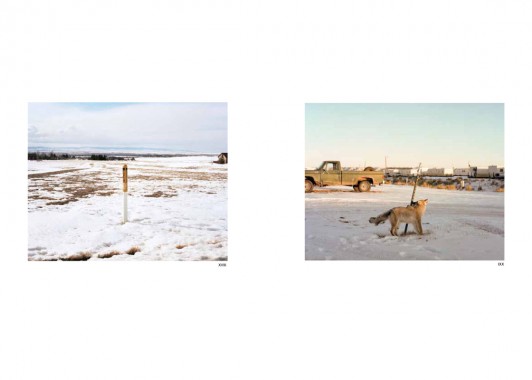
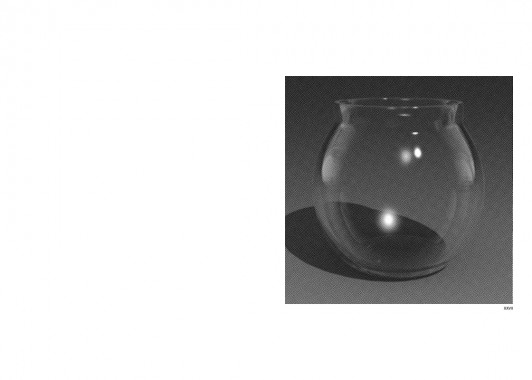
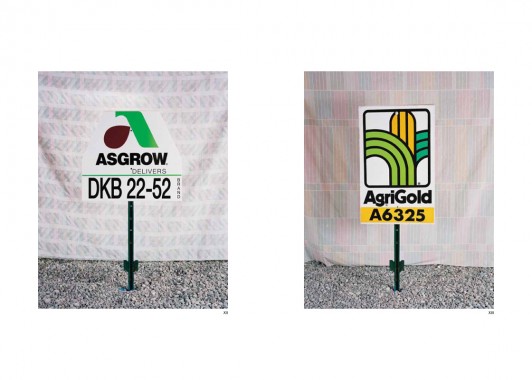
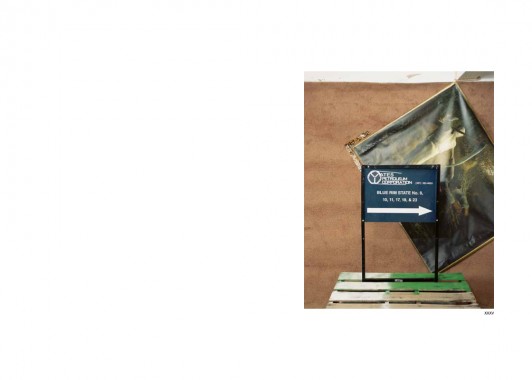
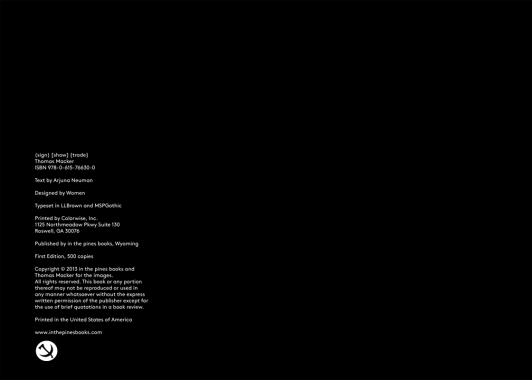
Agriculture, Art, Corn, Distribution, Ferdinand Hodler, Fracking, GMOs, Halliburton, In The Pines Books, Jackson Hole, LL Brown, Monsanto, Oil, Photography, Soy, Thomas Macker, Wyoming
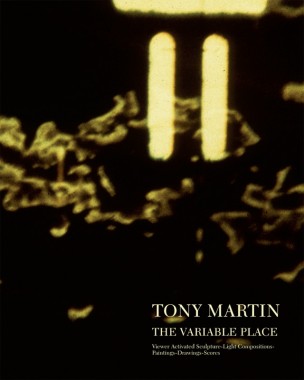
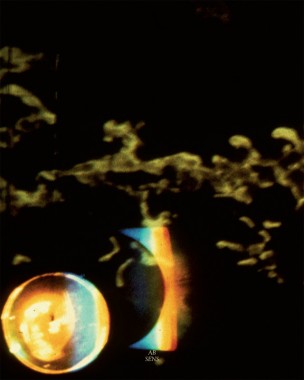
Tony Martin, The Variable Place
Edited by Camilla Padgitt-Coles and Nicky Mao
Softcover, 104 pp., offset 4/4, 8 x 10 inches
Edition of 350
Published by AB-SENS PRESS
$28.00 ·
Tony Martin arrived to San Francisco in 1962, promptly forging creative alliances and lifetime friendships with “new music” people Morton Subotnick, Pauline Oliveros, and Ramon Sender. When the San Francisco Tape Music Center moved to its location at 321 Divisadero St., Martin was invited by co-directors Sender and Subotnick to become the Visual Director. With special attention paid to working in the tape music medium, as well as performing regularly, they joined with Mills Center for Contemporary Music in ‘67. During the SFTMC days Martin was responsible for numerous visual compositions, including Terry Riley’s In C performance, as well as Sender’s Desert Ambulance. Martin was deeply engaged in experimenting with light via overhead and slide projectors, mixing paint, oil, water, and objects to build his light compositions. His following grew as a culture of psychedelia pervaded the 1960s and his light shows became popular amongst bands such as Jefferson Airplane and Grateful Dead. During this time he began to build “interactions” by engineering entire environments using sensors and mirrors. By the late ’60s he returned to New York City where he continued his focus for these types of installations; time and time again synthesizing his technological skills with painting as a moving image. A painter at heart, he continued with consideration of his experience working with his viewer-activated sculptures, as well as his devotion to the medium of light — maintaining a thread that binds all aspects of his work. His latest piece entitled Proximity Switched Installation (2012) is a clear culmination of a lifetime of experimentation/production. A video demonstration of this installation is available to view online and includes musical accompaniment by Compound Eye (Spring Press).
The Variable Place is the first book of its kind to tie together over 50 years of Tony Martin’s work. It includes an in-depth interview with Martin by Will Cameron, Albert Herter and the editors. As well as a special introduction by long-time friend/collaborator Pauline Oliveros.
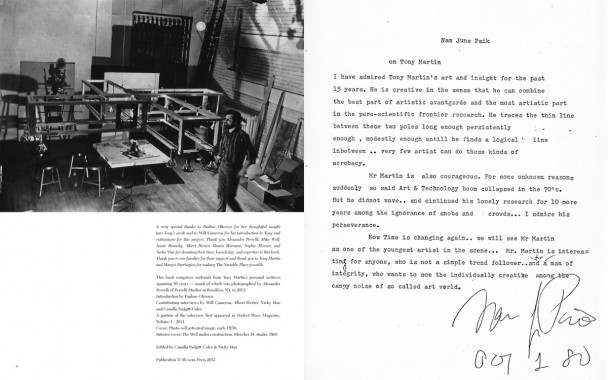
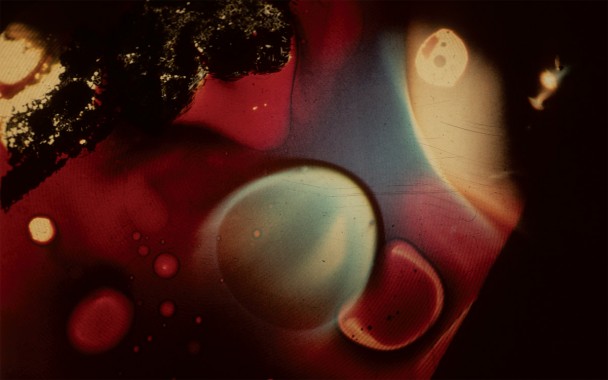
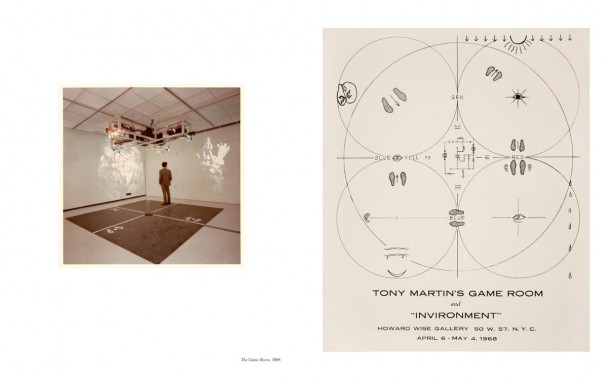
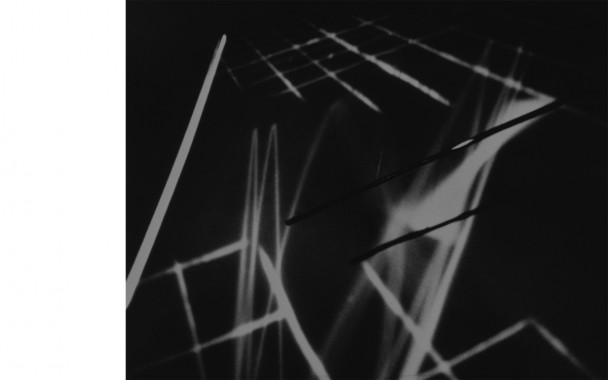
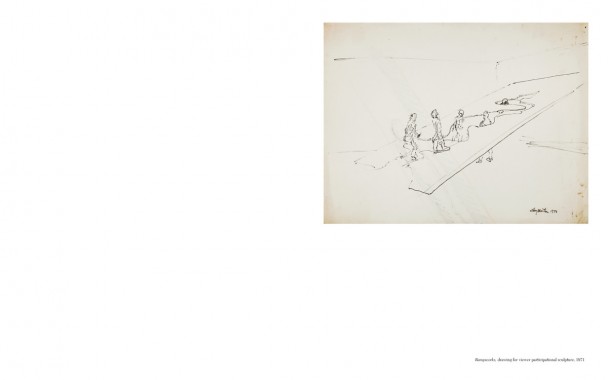
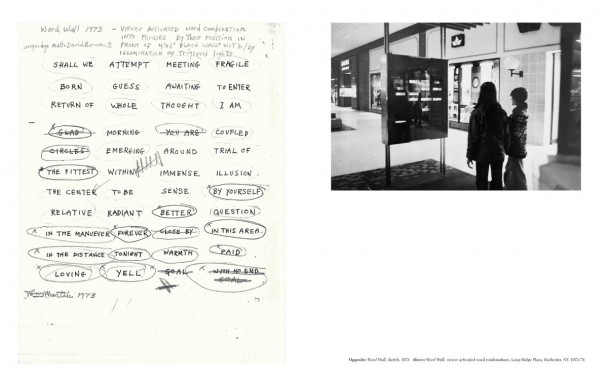
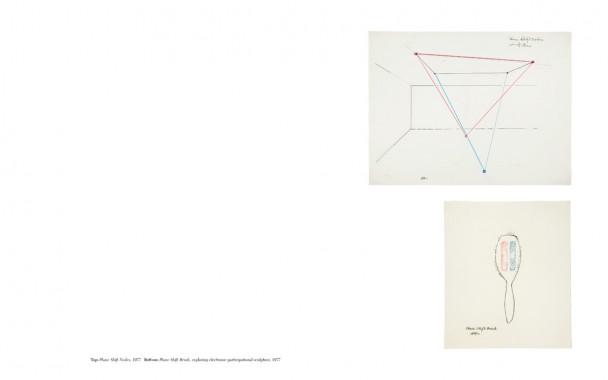
AB-SENS PRESS, Albert Herter, Art, Camilla Padgitt-Coles, Compound Eye, Culture, Design, Distribution, Morton Subotnick, Music, Nicky Mao, Pauline Oliveros, Performance, Photography, Ramon Sender, San Francisco, Terry Riley, Tony Martin, Will Cameron
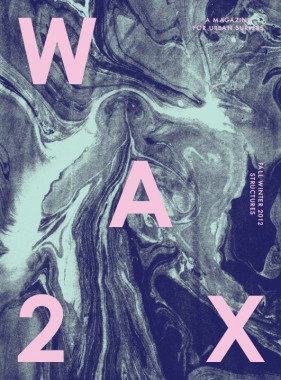
WAX Magazine 2, Structures
Softcover, 128 pp., offset 4/1, 200 x 270 mm
Edition of 500
ISSN 2167-8073
Published by WAX Magazine, Inc.
$15.00 ·
Featuring: Lawrence Luhring, Will Adler, Michael Marcelle, Kris Chatterson, Mercedes Maidana, Curtis Mann, John Luke, Mark Mahaney, and a free friction moment with Derek Hynd.
WAX is a bi-annual print publication exploring the intersection of art, culture and surfing in and around New York City. We believe that beauty and meaning can be found on sidewalks, boardwalks, skyscrapers and beaches alike. We’re interested in exploring the rich history of New York surfing, its beaches and residents and in finding a pathway of cultural creativity on and off the break. WAX shares the stories of area surfers who are also artists, designers, authors and auteurs. Each issue is organized around a unique theme, debuting with WAX Magazine 1, Dialogues in Spring 2012.
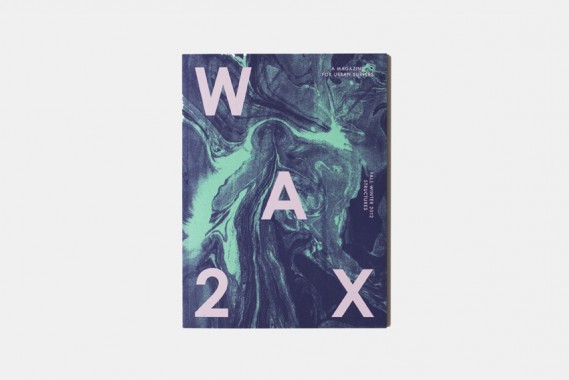
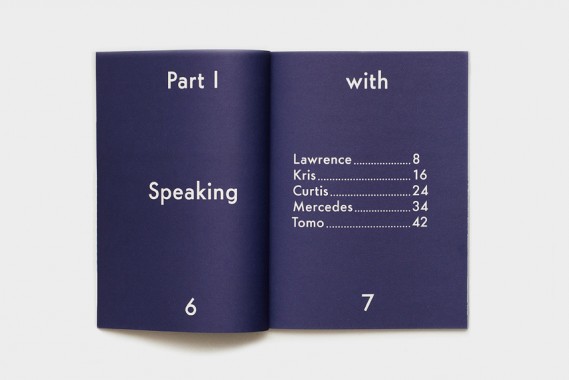
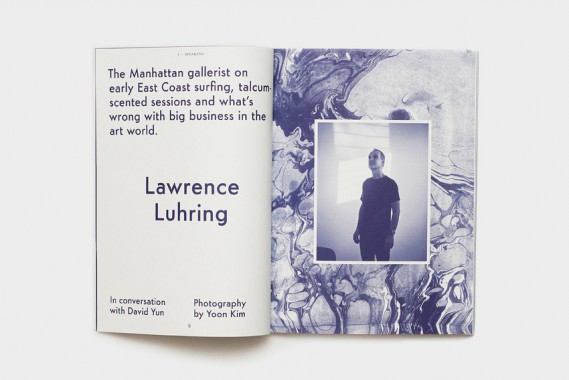
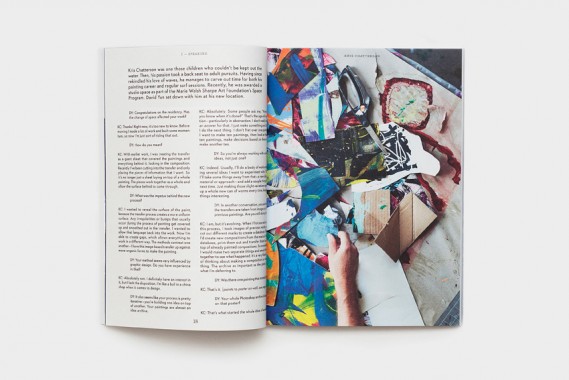
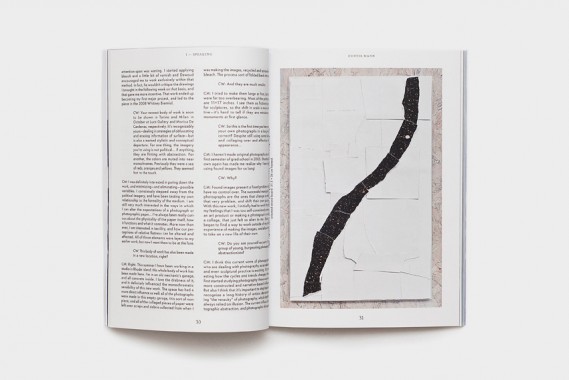
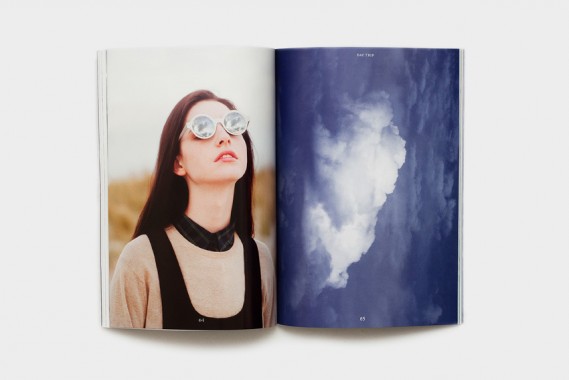
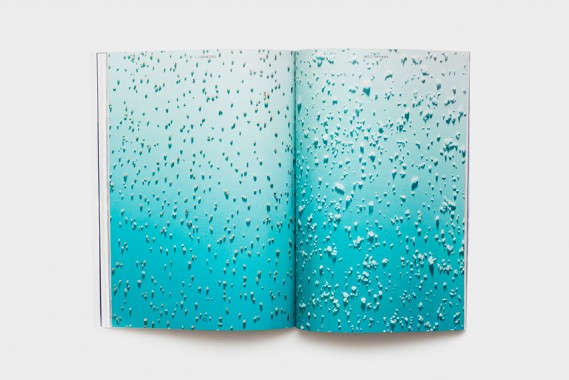
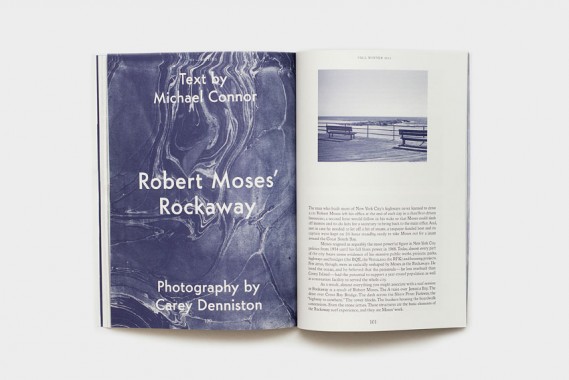
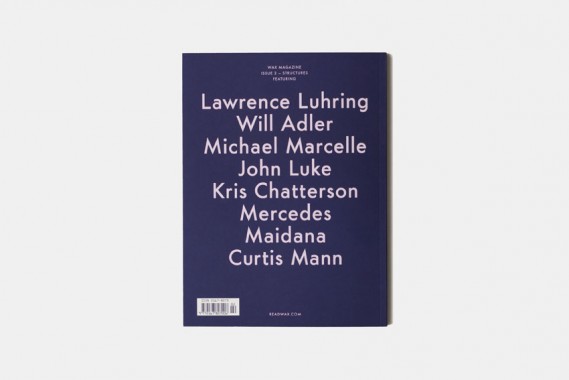
Abbye Churchill, Aeriel Brown, Art, Carey Denniston, Carmen Winant, Chris Rypkema, Cian O'Day, Culture, Curtis Mann, David Yun, Derek Hynd, Distribution, Elisa Routa, Jeff Mclane, John Luke, Jonathan Feldman, Kris Chatterson, Kristian Henson, Larissa Kasper, Lauren Snyder, Lawrence Luhring, LK Futura 1.0, Luke Stettner, Mark Mahaney, Matt McGregor-Mento, Mercedes Maidana, Michael Conner, Michael Marcelle, Mike Killion, Murray Fraser, New York, Photography, Rob Kulisek, Sport, Surfing, Tyler Breuer, Typography, WAX Magazine, Will Adler, Yoon Kim, Zak Klauck
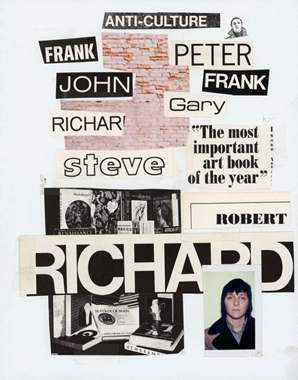
K8 Hardy, Frank Peter John Dick
Softcover, 52 pp., offset 4/4, 230 x 300 mm
Edition of 500
ISBN 978-0-9822090-2-8
Published by Capricious
$25.00 ·
K8 Hardy’s work riffs on pop culture and all the images we encounter as consumers. The art she exhibits are photographs and sculptures, but part of her process is gathering masses of images from disparate sources and obsessively collaging them together. In a sense, these collages are edits of photos torn from magazines, printed advertisements, and other visual imagery that Hardy finds compelling. Yet they also include her darkroom test strips and snapshots found at the junk store. These collages were never originally intended for exhibition or print, but merely research for the artist’s work. It was only after a few people saw them in her studio that she was encouraged to show them. For this reason, the collages are powerful and weighty; each is it’s own essay. Hardy has made visual examinations that deal with complicated ideas, issues of representation, phenomenon in style, and playful contemplations of fashion.
K8 Hardy (USA, b. 1977) is a New York-based artist who mines popular culture for material and has no regard for originality. She has no allegiance to any particular medium, but performance is a thread that weaves through her body of work. Hardy eschews virtuosity to craft and is currently exploiting photography. She believes in the power of flamboyant and bold gestures, and the conversations of play, which come across in her endeavors toward total expression. The surface is often used as a decoy in her work to address the political conditions of its production. She has recently been working on a series of photographs called the “Position Series” that employ the tropes of self-portraiture and abstract photography. Hardy is a founding member of the queer feminist journal and artist collective, LTTR. She has shown internationally at spaces including: Reena Spaulings Fine Art, NY; The Tate Modern, London; Artist Space, NY: Galerie BaliceHertling, Paris; Galerie Sonja Junkers, Munich; PS1 MOMA, NY; Higher Pictures, NY; Biennial of Photography and Visual Arts, Heerlen, NL; and the Brooklyn Museum, Elizabeth A. Sackler Center for Feminist Art, NY.
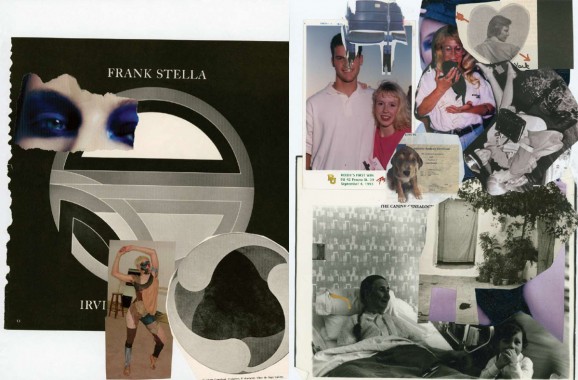
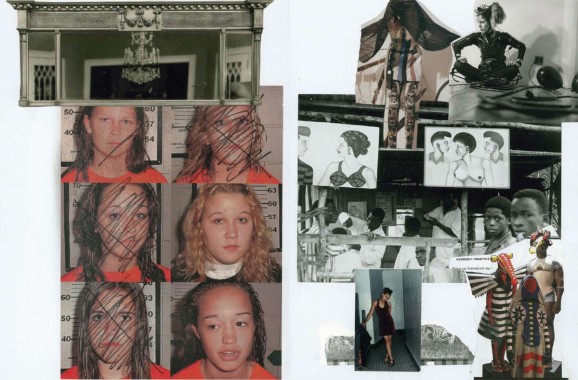
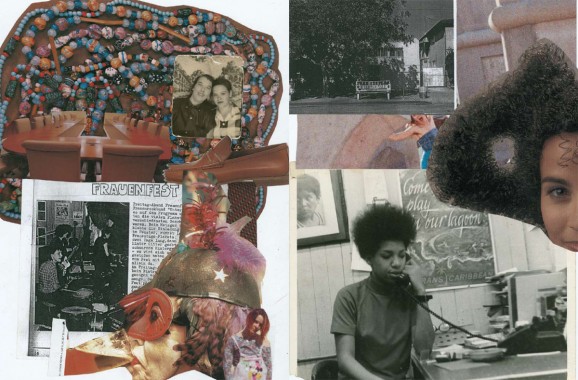
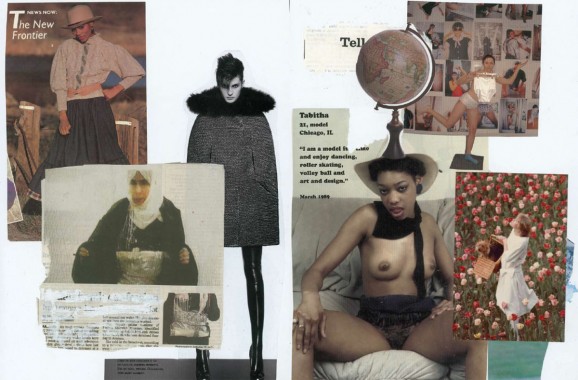
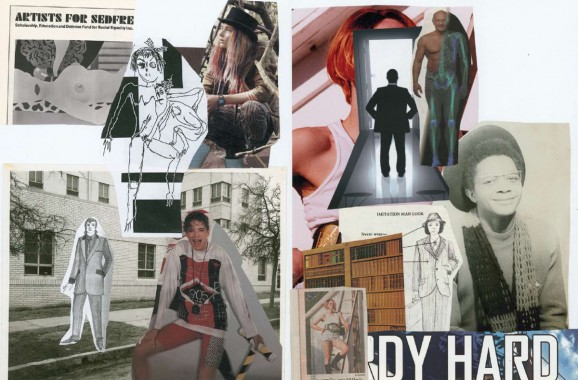
A.K. Burns, Art, Capricious, Collage, Culture, Distribution, Eileen Myles, K8 Hardy, LTTR, Photography, Ulrike Müller
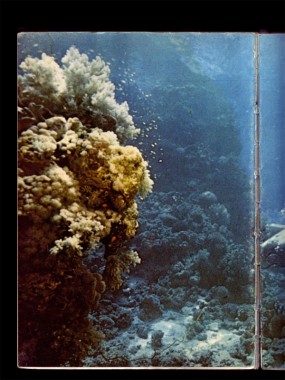
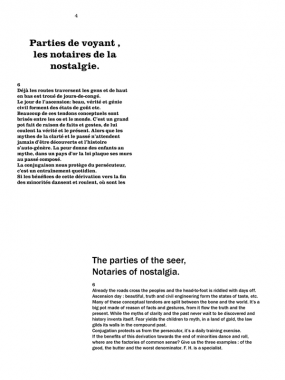
Benoit Platéus, Parties de voyant
Softcover, 100 pp., offset 4/4, 210 x 280 mm
English and French
Edition of 2000
ISBN 978-94-906-9337-4
Published by MER. Paper Kunsthalle
$28.00 ·
This first work on the Belgian artist Benoit Platéus is a monography as well as an artist’s book. It comprises a selection of works created between 1997 and 2011, as well as a text written by the artist and proposing a direct insight into his universe. Platéus work doesn’t neglect any medium — photography, video, drawing or sculpture — in order to search for ambiguities in the most mundane field of visibility. In this way his art often acts as a ‘psychic apparatus’ that plays on, and questions and reflects the viewer’s perception and consciousness.
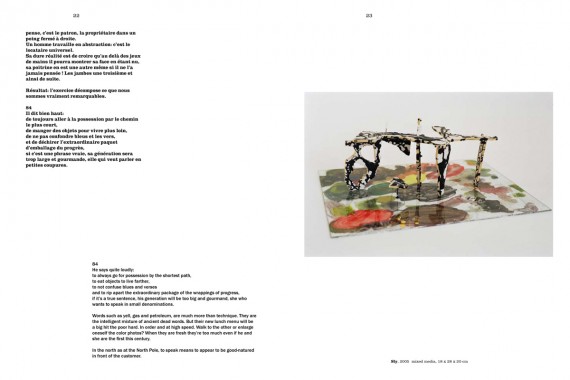
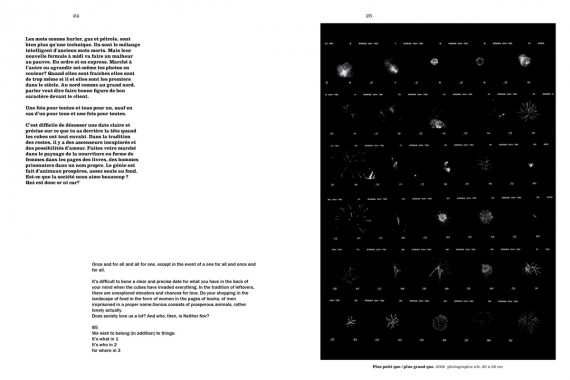
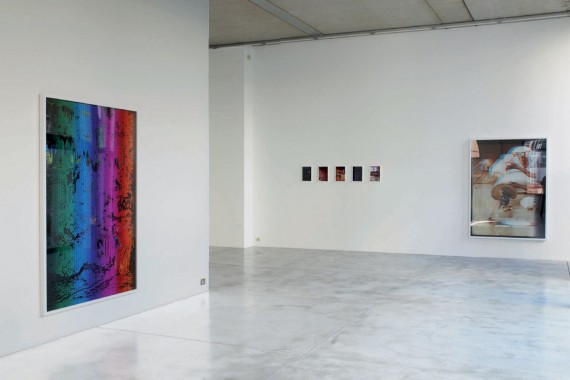
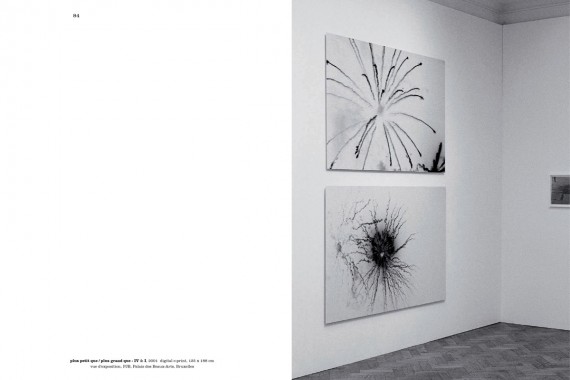
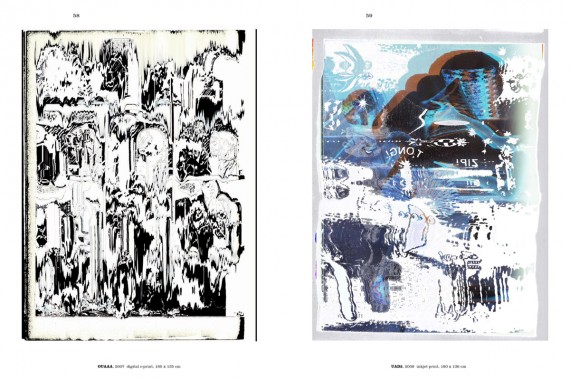
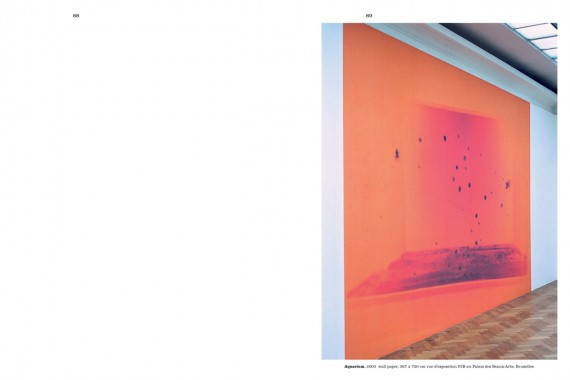
Animation, Art, Benoit Platéus, Distribution, Drawing, Film, James W Haenlin, MER. Paper Kunsthalle, Michelle Van Brussel, Photography, Sculpture
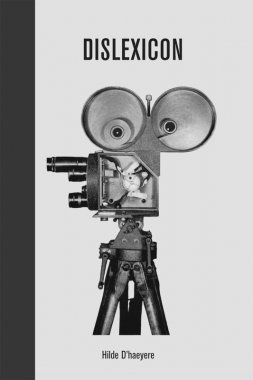
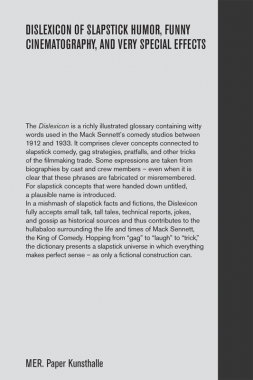
Hilde D’haeyere, Dislexicon
Hardcover, 64 pp., offset 1/1, 130 x 195 mm
Edition of 2000
ISBN 978-94-906-9331-2
Published by MER. Paper Kunsthalle
$20.00 ·
The ‘Dislexicon of Slapstick Humor, Funny Cinematography, and Very Special Effects’ is a richly illustrated glossary containing 138 witty words used in the Mack Sennett Comedy Studios between 1912 and 1933. It comprises clever concepts connected to slapstick comedy, gag strategies, funny pratfalls, dangerous stuntwork, and secrets of the filmmaking trade. In a mishmash of slapstick facts and fictions, the Dislexicon fully accepts tall tales, technical reports, jokes, and gossip as historical sources. Hopping from “gag” to “laugh” to “trick,” the dictionary presents a slapstick universe in which everything makes perfect sense — as only a fictional construction can.
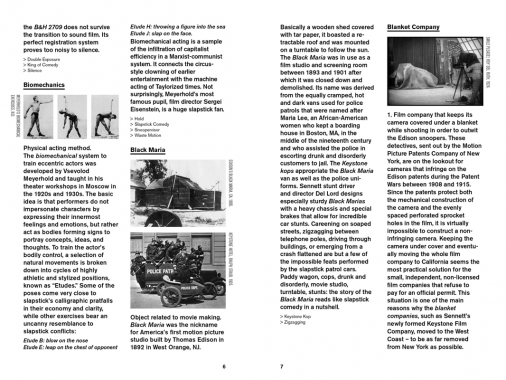
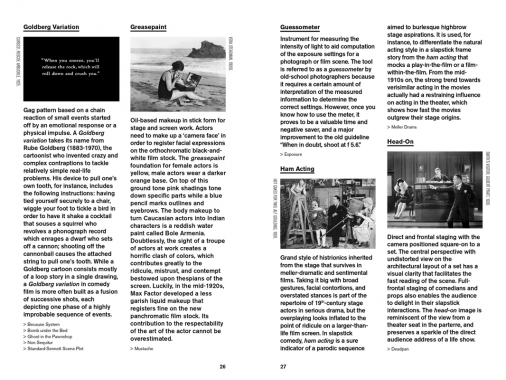
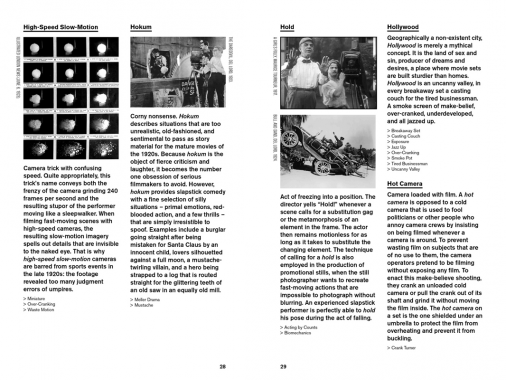
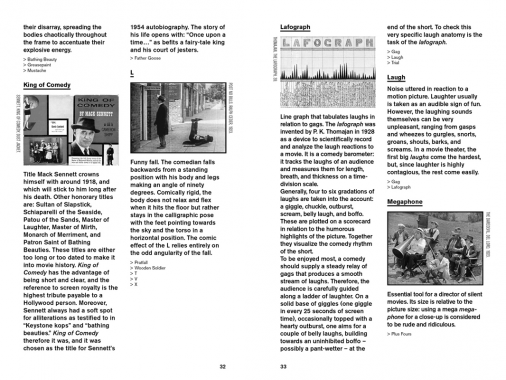
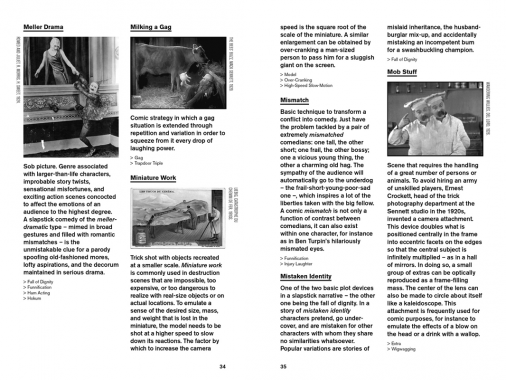
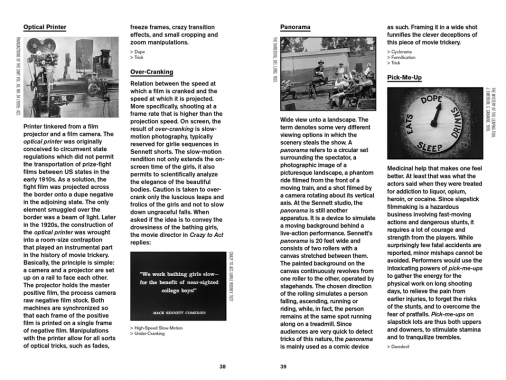
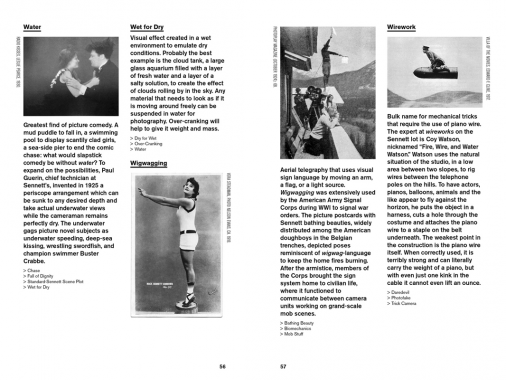
Cinematography, Comedy, Distribution, Film, Hilde D’haeyere, Hollywood, Los Angeles, Mack Sennett, MER. Paper Kunsthalle, Petra Van der Jeught, Photography, Slapstick, Sophie Nys
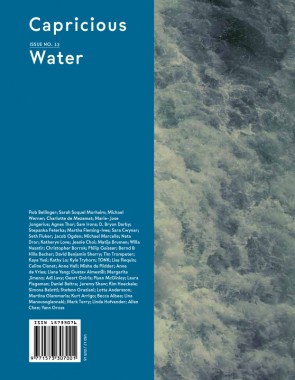
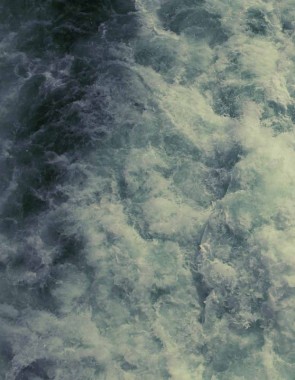
Capricious 13, Water
Softcover, 158 pp., offset 4/4, 210 x 270 mm
Edition of 2000
ISSN 1573-3076
Published by Capricious
$17.00 ·
With the theme of
Water, Capricious delves into one of the most pressing global concerns of the 21st century, finding a dynamic intersection between social consciousness and fine arts photography. Culled from hundreds of submissions, the editorial selection evokes not only the most visually profound forms of water, but documents our shifting relationship with water, whether it be through celebration, or sense of loss.
Capricious 13 moves through sections like Arid, Drift, and Quiet, a fluid visual narrative honoring water. And speaks to our palimpsest-like landscape, where the rise and fall of water lines are marked, and the history of water remains tangible. The work selected explores a myriad of watery dimensions, from the intimate, as water spills into our personal histories, quietly shaping our daily rituals; to global, as water is tamed, an ancient presence spun through industrialization. What ultimately comes to surface is, to what degree water has, in turn, overwhelmed and overcome us.
Also included, is a special chapter of curated texts by Hanna Wilde, including diverse variations on the theme, from poetry to political essay, to stage performance and film excerpt.
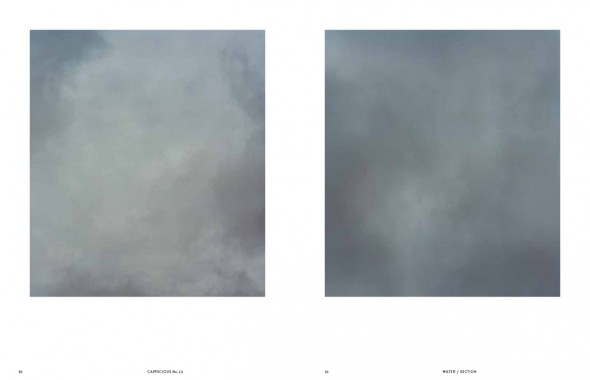
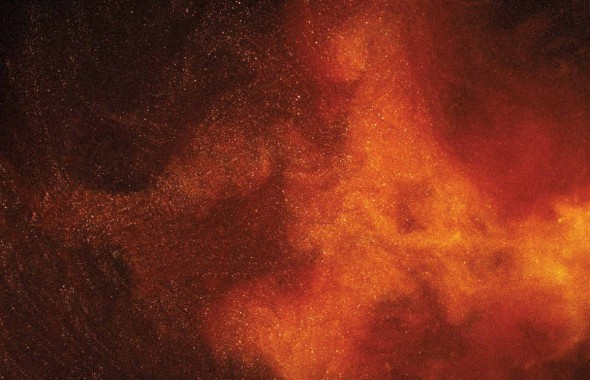
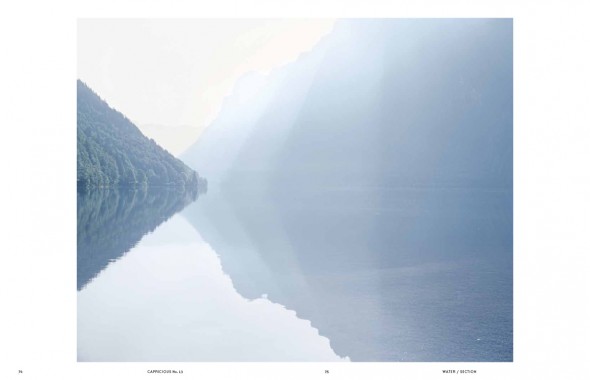
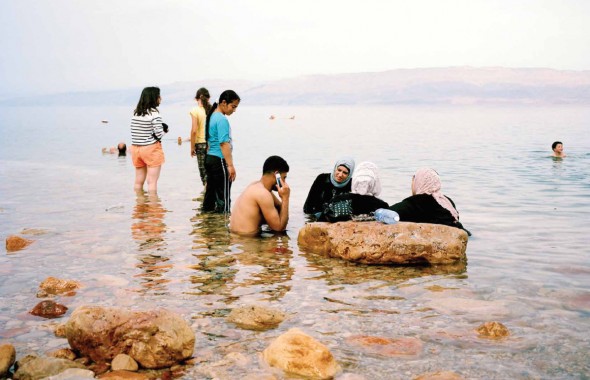
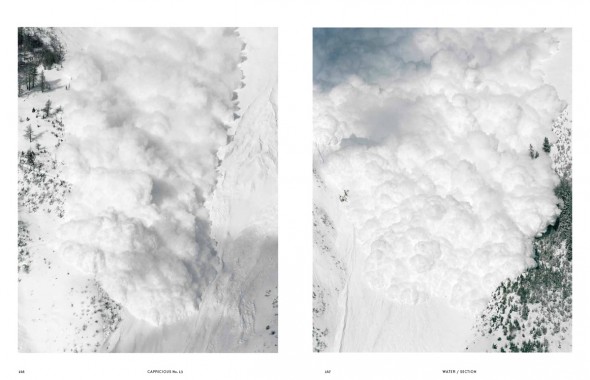
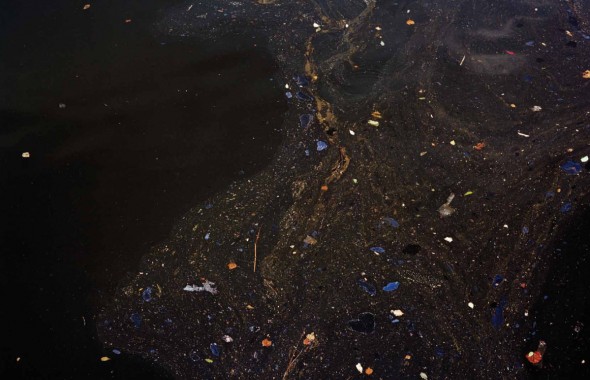
Adi Lavy, Agnes Thor, Allen Chen, Anne de Vries, Anne Hall, Art, Astrida Neimanis, Becca Albee, Bernd & Hilla Becher, Capricious, Celine Clanet, Charlotte de Mezamat, Christopher Borrok, Corrine Fitzpatrick, Culture, D. Bryon Darby, Daniel Beltra, David Benjamin Sherry, Distribution, Eli Leven, Ester Martin Bergsmark, Geert Goiris, Gustav Almestål, Hanna Wilde, Ingela Ihrman, Jacob Ogden, Jeanie Choi, Jeremy Shaw, Joff, Johan Eriksson, Katheryn Love, Kathy Lo, Kaya Yusi, Kim Hoeckele, Kurt Arrigo, Kyle Tryhorn, Laura Plageman, Liana Yang, Lina Manousogiannaki, Linda Hofvander, Lisa Requin, Lotta Andersson, Luiza Sa, Margarita Jimeno, Marie-Jose Jongerius, Mark Terry, Martha Fleming-Ives, Martina Giammaria, Matija Brumen, Michael Marcelle, Michael Werner, Misha de Ridder, Neta Dror, Philip Gaisser, Photography, Rob Bellinger, Ryan McGinley, Sadaf Rassoul Cameron, Sam Irons, Sara Cwynar, Sara Stridsberg, Sarah Soquel Morhaim, Seth Fluker, Simona Belotti, Sofia Hultin, Sophie Mörner, Stefano Graziani, Stepanka Peterka, Tim Trompeter, TONK, Vandana Shiva, Willa Nasatir, Yann Gross
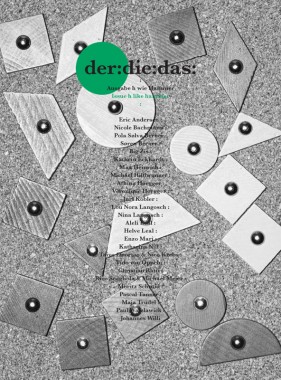
der:die:das:, Issue h like hammer
Softcover, 92 pp., offset 4/4, 200 x 270 mm
English and German
Edition of 1000
ISSN 1663-2508
Published by der:die:das:
$20.00 ·
Some words on, and images of, hammer. A magazine about common things. Featuring: Lou Nora Langosch, Johannes Willi, Katharina Nill, Pascal Tanner, Rico Scagliola, Michael Meier, Kathrin Eckhardt, Veronique Hoegger, Aleli Leal, Enzo Mari, Nichole Bachmann, Nina Langosch, Moritz Schmid, Maja Trudel, Christian Ratti, Eric Anderson, Søren Berner, Taiyo Onorato, Nico Krebs, Michael Hiltbrunner, Helvetia Leal, Max Heinrich, Paul Watzlawick, et al.
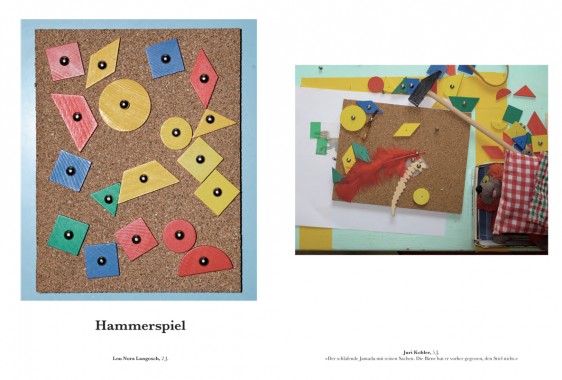
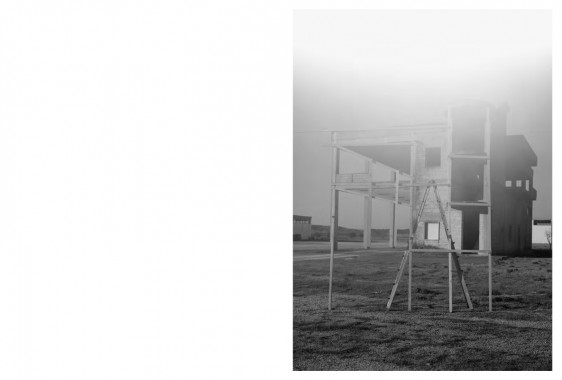
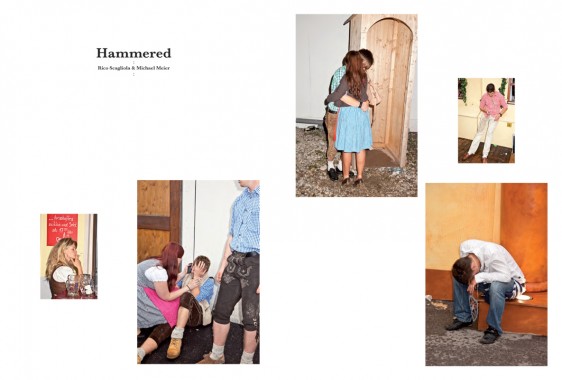
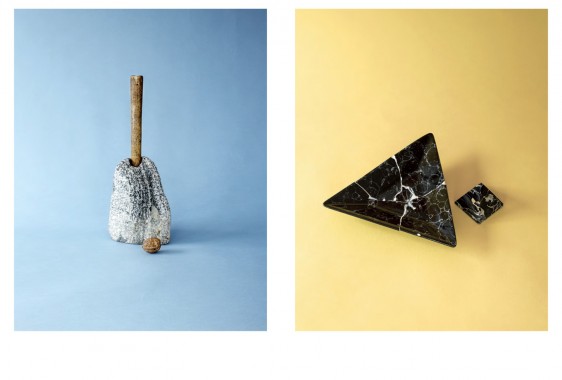
Aleli Leal, Art, Basil Rogger, Bill Gilonis, Christian Ratti, Culture, der:die:das:, Distribution, Enzo Mari, Eric Anderson, Helvetia Leal, Hin Van Tran, Johannes Willi, Katharina Nill, Kathrin Eckhardt, Lou Nora Langosch, Maja Trudel, Max Heinrich, Michael Hiltbrunner, Michael Meier, Moritz Schmid, Nadja Aebi, Nichole Bachmann, Nico Krebs, Nina Langosch, Pascal Tanner, Paul Watzlawick, Photography, Rico Scagliola, Sculpture, Søren Berner, Taiyo Onorato, Veronique Hoegger

Enrique Santos, The Mexican Suitcase
Softcover with flaps, 360 pp., offset 4/1, 200 x 240 x 32 mm
English and Spanish
Edition of 2000
ISBN 978-607-7636-29-8
Published by Landucci
$45.00 ·
The Mexican Suitcase is the result of more than three years of work by the Mexican-based Argentinian artist, Enrique Santos. This artist book could be, amongst other things, a ‘catalogue’ of an apocryphal exhibition that is not meant to be, one that from its very beginning proposes a reverse path to that already established — first the book, and then? Ever since this basic wink (not to mention that the title itself is an appropriation) Enrique Santo’s work addresses the idea of “robbery”. Using diverse languages and tools (photography, collage, video, sculpture, film, installations) the artist reflects upon the contemporary artistic works in a sociocultural and political environment of violence in which we find ourselves immersed. Robbery as a metaphor of appropriation and “postproduction” — in Bourriaud’s definition of the word — as an element specific of an artistic way of producing, that is loaded with intertextuality, reference, discourse and images that roam our daily lives.
Santos’ work is a way of thinking about how contemporary art is produced, and at the same time it talks about the gaze, the interpretation of he/she who observes, the understanding and production that comes with every look. It reflects upon a single active spectator, who builds a discourse, appropriates all meanings and elaborates on them according to his life story, and his social, cultural and emotional capital. That gaze has a filter through which history is interpreted. It talks about and with the viewer without underestimating his capacity for understanding. From the very beginning, the book presents a relationship of shared complicity, discourse, codes and understandings, but demands a lucid and imaginative perspective.
Retaking film, journalistic, documentary and advertising language, Santos quotes and reinterprets the great thieves of the screen and some real criminals, in order to talk about lies, confusions, myths and misunderstandings, as well as an ever more violent and heartbreaking reality that crawls into our lives through trivialized and shallow images.
— Florencia Magaril
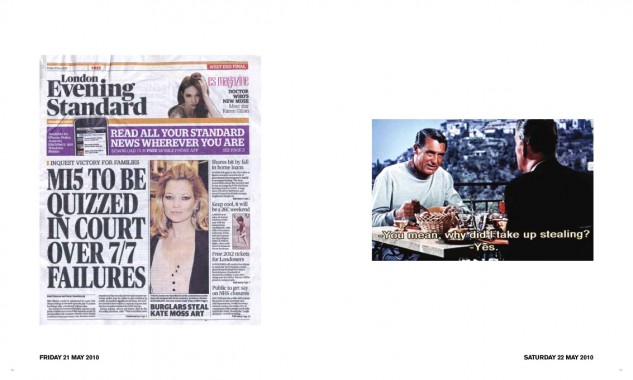
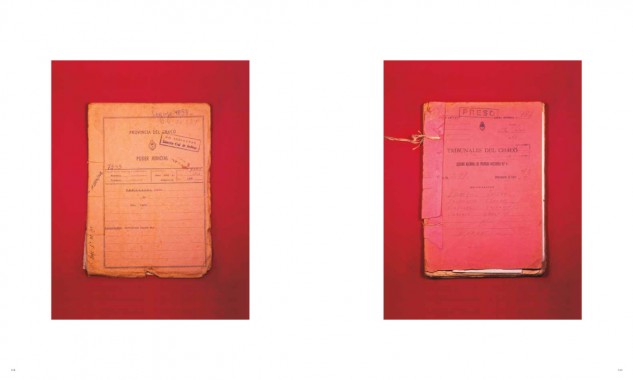
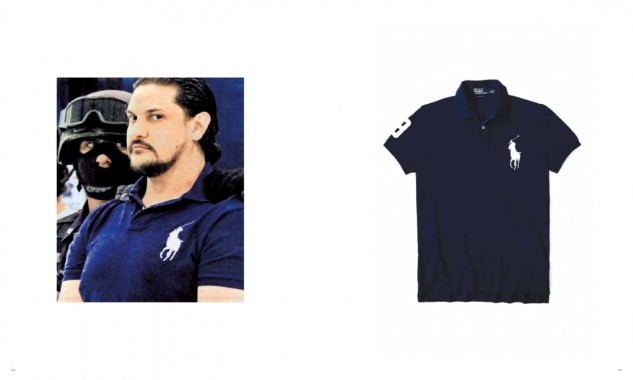
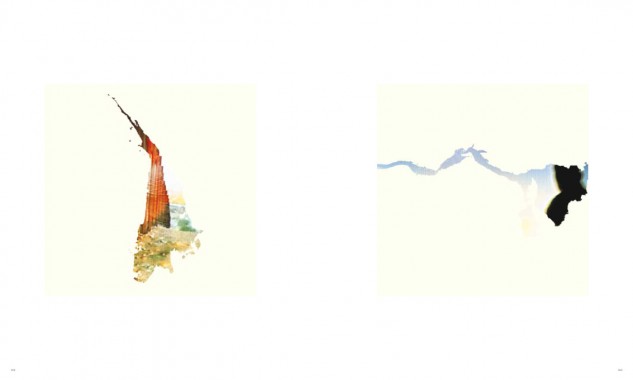
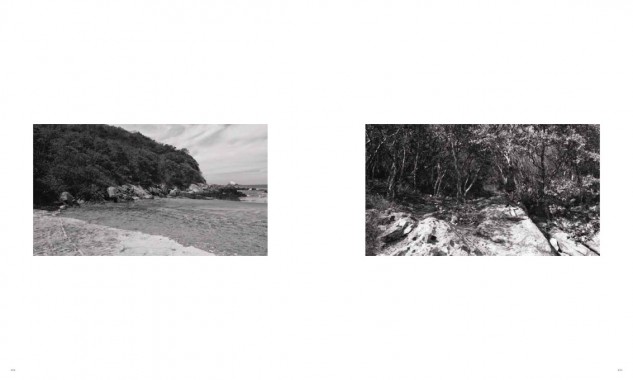
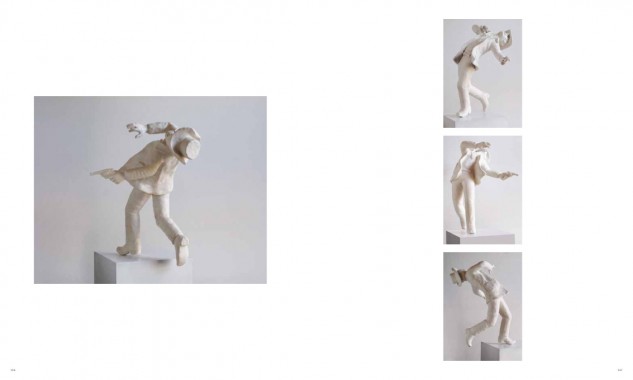
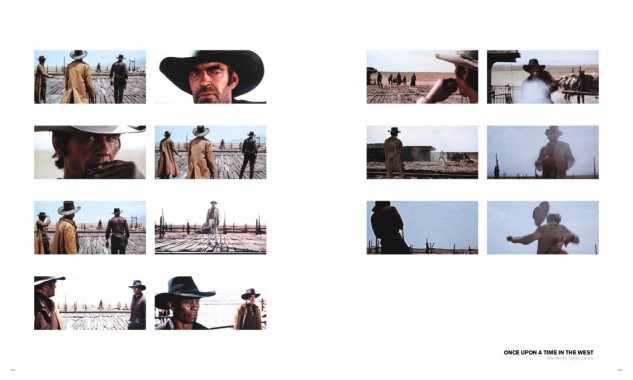
Aaron Smuts, Antonieta Cruz, Art, Deleuze & Guattari, Distribution, Edward Said, Enrique Santos, Film, Florencia Magaril, Gilberto Salinas, Goya, Graham Huggan, Guadalajara, Jalisco, Jean-Luc Goddard, Jorge Luis Borges, Landucci, Marshal McLuhan, Mexico, Pepe Montelongo, Photography, Randy Kennedy, Roland Barthes, Roman Gubern, Sculpture, Tera Patrick, Werner Herzog
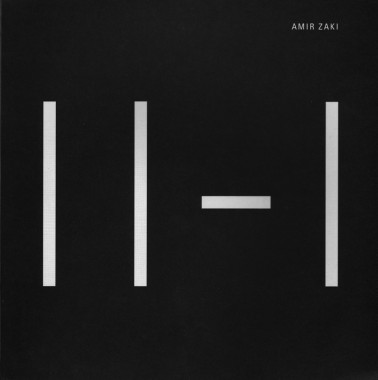
Amir Zaki, Eleven Minus One
Softcover, 122 pp., offset 4/4, 9 x 9 inches [26 x 36 inches unfolded]
Edition of 500
ISBN 978-0-26172-2-9
Published by LAXART
$75.00 ·
For this project,
Amir Zaki carefully reconstructed and reinterpreted, in virtual 3D space, several photographs from a series made in the mid-1980’s by Swiss artist duo Peter Fischli and David Weiss. Their photographs depict precariously balancing temporary sculptures that they intentionally constructed in a slap-dash manner. Their photographs of these sculptures were casually shot in their studio using unprofessional lighting and equipment. Through these photographs of temporary sculptural constructs made of household detritus, Fischli and Weiss subvert the idea of sculpture as a heroic manifestation of a unique and masterfully constructed object. Their work privileges the document over the sculpture, which Zaki interprets as an ironic inverse of the ubiquitous professional photographic documentation of the ‘serious’ sculpture found in so many art books and journals. In Zaki’s adaptation of their work, there is a re-inversion at play as he privileges the sculpture again, but only as a 3D virtual non-object in order to destabilize their relationship. This has manifested as a series of short photorealistic animation loops and a foldout book based on the eleven different ways that a cube can be unfolded. Working with this methodology allowed Zaki to further interrogate the conventions and limitations of photography by exploring depictions of ‘real’ space, but without the restraints of actual physics or forces such as gravity. Zaki is interested in the perversion of using Fischli and Weiss photographs of quickly made, throw-away sculptures as a source to create an incredibly laborious photorealistic virtual 3D scene that can be explored from all angles, both through photographic and orthographic projections. In this project Zaki has also fetishized the sculptures by making them virtual, stylized and idealized. He has resurrected these sculptures and placed them in a world where they need not ever ‘fall’ (fail). In the animations Zaki has created, the sculptures simply spin, teeter or gyrate indefinitely. In the photographs Zaki has rendered for the book, the sculptures hover in a perfect orthographic projection space, surrounded by a black void.
The book is a complex foldout design that is quite difficult to describe in text. It is ten double-sided square pages. Each page spread unfolds into unique configurations of six squares that represent all sides of a cube. The images on each unfolded page spread depict 3D digital recreations of photographs from the series Equilibres by Swiss artist duo Peter Fischli and David Weiss. When fully unfolded, the book opens up to approximately 27 x 36 inches. It is an interactive object, and can be folded and unfolded in multiple ways, creating grids, cubes, and unfolded boxes, each creating a unique experience and juxtaposition of images. It is important to recognize the book in terms of a limited edition or a multiple. It is also more of an object with sculptural qualities and a tactile nature than a ‘book’ in the traditional sense.
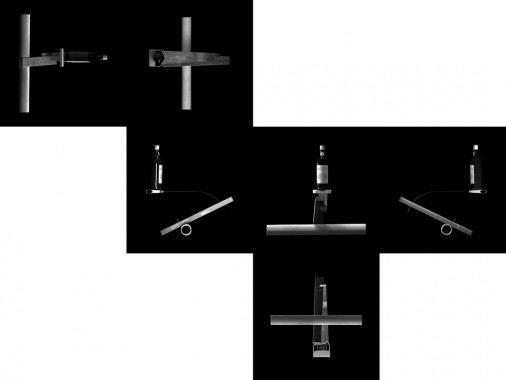
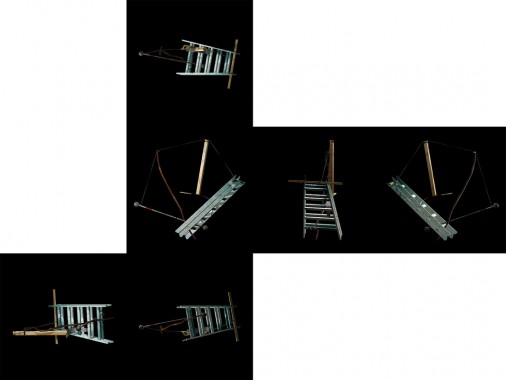
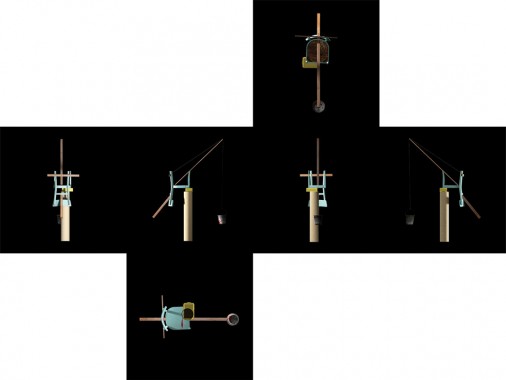
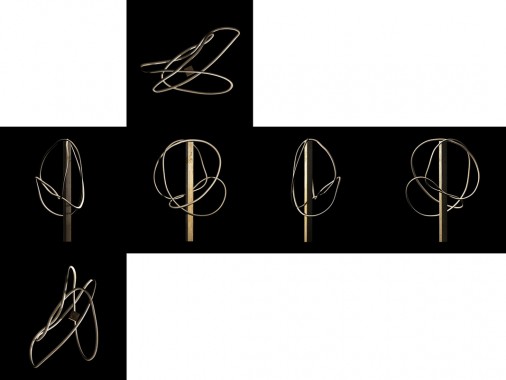
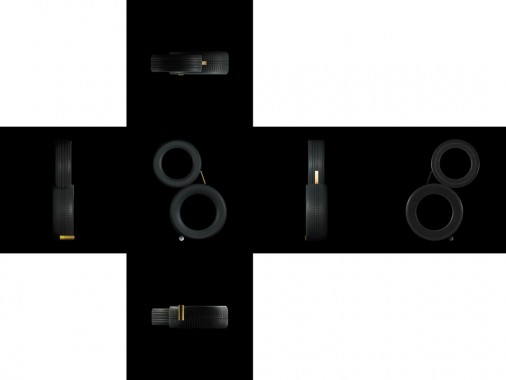
Amir Zaki, Art, David Weiss, Distribution, Eighth Veil, Greenblatt-Wexler, LAXART, Peter Fischli, Photography, Sculpture
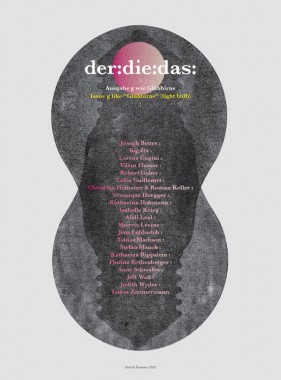
der:die:das:, Issue g like glühbirne (light bulb)
Softcover, 92 pp., offset 4/1, 200 x 270 mm
English and German
Edition of 1000
ISSN 1663-2508
Published by der:die:das:
$20.00 ·
Some words on, and images of, glühbrine (light bulb). Featuring: Joseph Beuys, Big Zis, Lorenz Cugini, Vilem Flusser, Robert Gober, Colin Guillemet, Christina Hemauer, Roman Keller, Veronique Hoegger, et al.
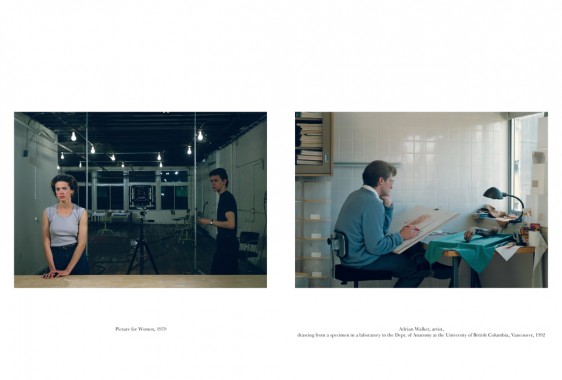
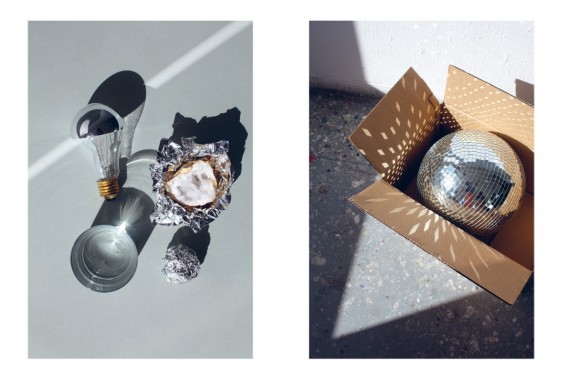
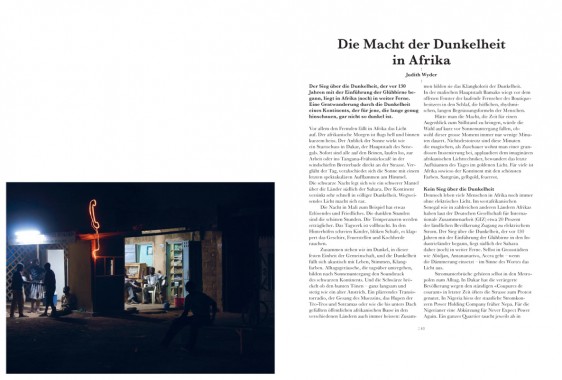
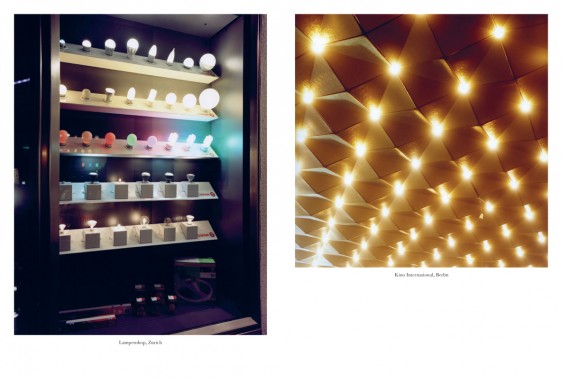
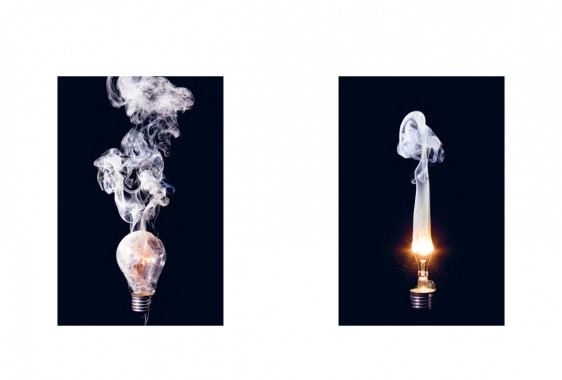
Aleli Leal, Anne Schwalbe, Art, Big Zis, Christina Hemauer, Colin Guillemet, Culture, der:die:das:, Distribution, Flurina Rothenberger, Isabelle Krieg, Jeff Wall, Jens Lubbadeh, Joseph Beuys, Judith Wyder, Katharina Hohmann, Katharina Rippstein, Lorenz Cugini, Lukas Zimmermann, Photography, Robert Gober, Roman Keller, Sculpture, Sherrie Levine, Stefan Mauck, Tobias Madison, Veronique Hoegger, Vilem Flusser
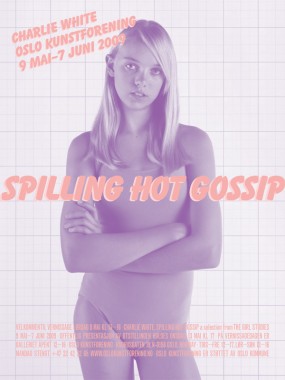
Charlie White, Spilling Hot Gossip
Poster, 100 lb matte coated paper, offset 2/0, 18 x 24 inches
Edition of 500
Unsigned, unnumbered
Published by Oslo Kunstforening
$12.00 ·
Collaboration with
Charlie White and design of poster/take away for the exhibition
Spilling Hot Gossip a selection from
The Girl Studies at
Oslo Kunstforening.
“Portraiture has always been motivated by two competing and overlapping desires: the desire to record, and the desire to be recorded. Artists Katy Grannan and Charlie White have examined this tension, exploring concepts of identity and subjectivity in a world increasingly dominated by media representations of the ideal self. The Sun and Other Stars presents two bodies of work that map the fragility and resilience of individuality in contemporary Western culture.
Grannan’s unflinching portraits capture adult subjects along the sun-struck boulevards of the American West, transforming them from obscurity to individuality with pathos and candor. White’s series of blonde teenage girls frames the popular and tyrannical appetite for celebrity with a deadpan lack of sentimentality. These two photographic series, accompanied by Grannan’s first film project and White’s new animation and personal collections of mass-culture ephemera, provide a visual vocabulary for an examination of the human subject and the encumbering effect of desire and aspiration.”
— Britt Salvesen, The Sun and Other Stars: Katy Grannan and Charlie White
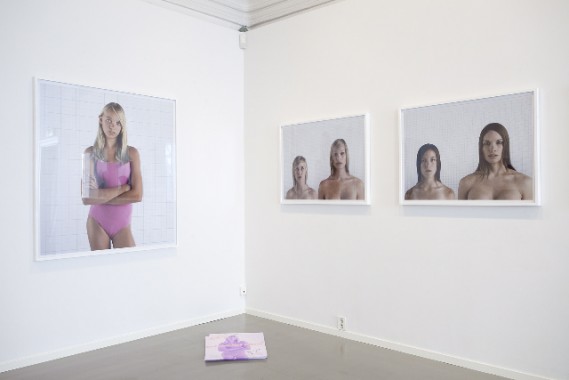
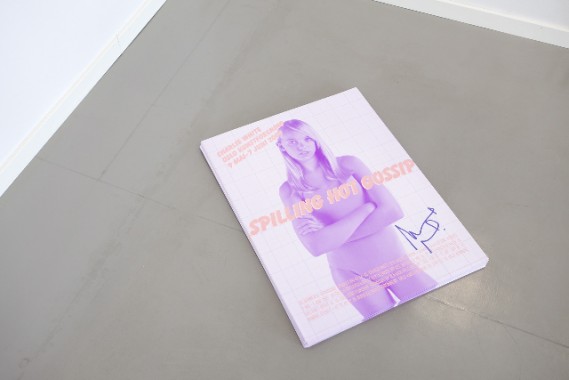
Art, Britt Salvesen, Charlie White, Distribution, Jonathan Maghen, Katy Grannan, Oslo Kunstforening, Photography, Posters, Textfield, Typography






















































































